About me
Full Name: Susanna Di Vita
Affiliation: University of Genoa, UNIGE - member of the IANUA-ISSUGE Excellence Academic Program (admission requires a perfect GPA score)
Degree: Bachelor of Science in in Computer Science
Email: susanna.divita.2@gmail.com
GitHub: https://github.com/SusannaDiV
LinkedIn: https://www.linkedin.com/in/susannadiv/
Location: Genova, Italy
Abstract \
Improving printability of posts and wiki pages to enable dissemination of knowledge on paper. Implementing page-specific preview and Optimized for print option to improve user experience while outputting PublicLab.org's content on paper.
Project description
The aim of the project is twofold: a) to optimize the pre-existing default view for printing; b) to create both a preview page and a new CSS stylesheet for a print-specific page view.
As for a), both better readability via font resizing, augment of contrast through switching to b/w, improve ink economy by removing unnecessary shading, prevent cutoff text and better blank space management through proper adjustment of size borders and suitable redefinition of page breaks - allow improved default view for printing. Such improvement leads to both better readability and accessibility of printed wiki pages. Then, it allows reduced environmental impact of paper-based outputting, with lower consumption of both ink and paper. Deliverables include both improved handling of printed links through visualization of link targets and upgraded hiding of unnecessary page elements of today's version - like e.g. the navigation content in the footer. Success relies on suitable regrouping of information as well as on careful handling of page breaks.
As for b), the project is concerned with the creation of a new a print-specific page view stylesheet and with the addition of a "Printable Version" button that links to a Print-Specific Page Preview written in JavaScript. The latter button allows production of specific print-optimized and content-oriented pages, with possible margin adjustement in case of binder storage. In both cases, I aim at providing the user with a seamless reading experience; this is achieved by producing a text-to-page view that results in files containing only necessary information. Deliverables include an advanced hiding strategy for redundant page elements and safeguard enforcement of both functionalities against unintentional breakage at the hand of future contributors.
Issues to be solved
Optimization default view for printing
- Defining side borders and font sizes
- Optimizing color and contrast
- Improve hiding strategy for unnecessary layout elements
- Reducing the usage of page breaks and preventing text cutoff
- Refining hypertextual link display
- Adding print-exclusive messages
Implementation of a print-specific page view
- Creating an "Optimized for print" button
- Implementing Print-Specific Page preview
- Hiding unnecessary page elements -- Advanced (decorative images, videos and other iframes)
- Handling blank gaps from iframe removal
- Usage of CSS filters for environmentally friendly graphs
- Background replacement with border highlining
- Supplementary options for binder storage
Timeline/Milestones


During the Community Bonding period I will keep familiarizing with the codebase by reading the documentation, solving issues and making contributions. I will also align myself with PublicLab.org's community by getting to know its members and discussing planning details with my mentors.
The result of the first evaluation would be a completely optimized default view for printing. The deliverables in the second phase evaluation will be a fully optimized CSS print default stylesheet and a Page-Specific Print preview implementation. The creation of universally applicable and intuitively named CSS rules will promote the reusability of components within PublicLab.org's codebase.
Testing Strategy
The testing stage will be greatly simplified by the separation of print and screen CSS rules in different files. Such separation enables the implementation of a time-optimized testing strategy, in which changes made to the print.css stylesheet will be instantly visible on screen just after reloading (therefore cutting out the need for constantly PDF-exporting and browser-previewing for layout checking).
The page print-out emulation will be achieved by both isolating the print and screen CSS rules and temporarily switching the stylesheets loaded by the main's HTML link tags. After isolating the HTML link tags responsible for loading the CSS stylesheets

I am going to switch temporarily their respective media attributes (from "screen" to "print" and vice versa):
This will allow me to employ the commonly browser-shipped Developer Tools in order to navigate the newly modified layout elements as if I were testing the default screen-version of the webpage.
I am going to access Chrome's Developer Tools by selecting the Developer Tools>More Tools>Rendering panel and by changing the "Emulate CSS Media" option to print. Once the tests are finished, the original corresponding attributes will be restored.
Implementation
Adjusting Side Borders and Font Sizes
The current stylesheet produces pages with a non-centered body because of disproportionate margins. Unnecessary padding before the h1 tags also needs to be removed:

In order to get rid of all of the unnecessary blank space at the beginning of the first page when printed, I'll need to target it with the :first page pseudo-class:

As for the font sizing, it's vital to keep in mind that printers require different units for the font size than the monitor; thus, I am going to convert pixels into points. A font size of 12pt - which corresponds to 16px - is considered optimal for content readability; h1, h2, h3 and h4 will be scaled accordingly.
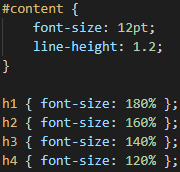
A simplified margin management system for the following regular pages will be provided by integrating Paper CSS, an extremely light-weight library for automatic indentation and padding width setting.
Both the border definition and the font size will be applied for both parts of the project, as they both represent the optimal layout consideration in print settings.
Note: the font resizing will not affect the number of pages being needed to be printed, as pace break optimization and hiding of unnecessary elements will minimize that.
Color and contrast optimization
Changing the color scheme to black font on white background not only provides a higher contrast, but it's also preferred by most people due to the expense of colored toner. Furthermore, by converting the body's color to black the printer understands that no shading is necessary - which improves ink economy. Here is part of the code that would make the text in the body black, and get rid of any background color for best printing results:
And here is its effect:
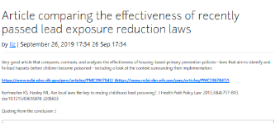
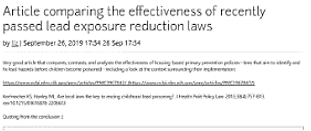
Improve hiding strategy for unnecessary layout elements
By hiding some
elements, it is possible to provide users with a better way to print and to
keep anything unnecessary from the hard copy. The
current print.css stylesheet removes and collapses some of the redundant
content with display: none. However, unnecessary elements like the navigation
content in the footer and the embedded chatroom form still appear in the hard
copy. 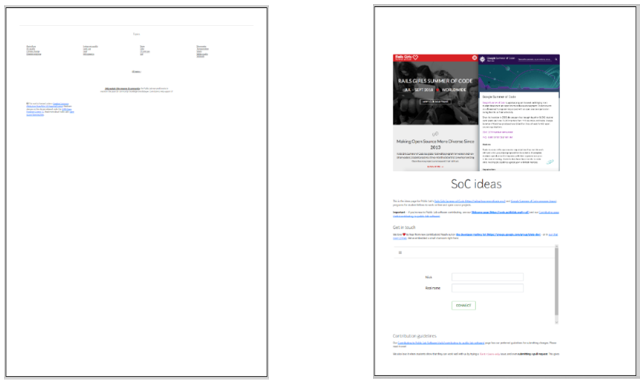
Also, the code segments appear to be scattered across the file. I intend to improve code readability by rearranging them in an orderly manner.
Page break avoidance strategy
It is much easier for the users to organize their printouts if key information is grouped together and not spread across multiple pages. Not to mention, printer output should ideally use as few pages as possible with regards to the environmental impact inherent to paper-based outputting of information.
The three CSS
attributes page-break-before, page-break-after, and page-break-inside allow you
to decide exactly where a print page will be broken. Currently only the page-break-after
attribute is being employed; it is to set a break after every thematic change
of content (defined by the
tag). However, this results in terrible
blank space management, as less than one third of the physical page usually ends
up containing data from the site.
The newer and fully browser-supported CSS3 properties break-before, break-inside break-after allow better control on how page, column, or region breaks behave before and after an element. They do so by allowing more values to be set than the old always/avoid. Examples of the new values include auto and avoid page; breaks are permitted but not forced in the former, while the latter avoids entire pages break whenever possible. The value avoid-page is preferable whenever page breaks are to be specified, since it allows the user to use as little paper as possible while still avoiding page breaks within grouped data such as tables, images or unordered lists:

A possible implementation for the CSS stylesheet would be the following:

In order to prevent cutoff text, I am going to make use of the windows and **orphans** properties; the former and the latter specify the minimum number of blocks to be shown on top and at the bottom of the page respectively.
The box-decoration-break property controls element borders across pages. When a quotes section block has an inner page break it will be possible to either split its layout or clone it, by replicating the margin, padding, and border.

I would like to stress the point that page break control is little more than a suggestion to the browser. There's no guarantee a break will be forced or avoided because the layout is restricted to the confines of the paper.
Hypertextual link handling
As links cannot be clicked on a piece of paper, I am going to display their behavior through the visualization of link targets. I am also going to refine hypertextual link display by highlighting the links with colors and rightfully placed brackets so that they get noticed. I'll implement this functionality as follows:

Part 2 - Implementation of page-specific view
Creation of "Optimized for printing" button and Page-Specific Preview functionality
In order to ameliorate user's experience on printing PublicLab.org content, I am going to create an "Optimized for printing" button. When clicked, it will create a "printer friendly" version of the document.
Firstly, I am going to add the print-friendly button in between the tags right under the main header:

Right after that, I am going to add the HTML link to the "Optimized for printing" stylesheet:

I discuss the details of "Optimized for printing" stylesheet implementation in the next paragraph. This stylesheet is responsible for the production of the ready-to-print files with only text, titles, and important images the button refers to.
Moreover, I am going
to implement a print-optimized, page-specific preview in JavaScript. The
resulting page will automatically switch to using the "Optimized for printing"
stylesheet usage, while showing a welcoming message to the user. I have
accumulated relevant JavaScript experience in previous autonomous and
course-work related projects. Here is a part of the code which I've already
written and which I am going to adjust in order to satisfy this project's
page-specific needs. The fact that a separate
print-preview.js file contains all information about the Specific-Page
Print-Preview safeguards the functionality of the latter. 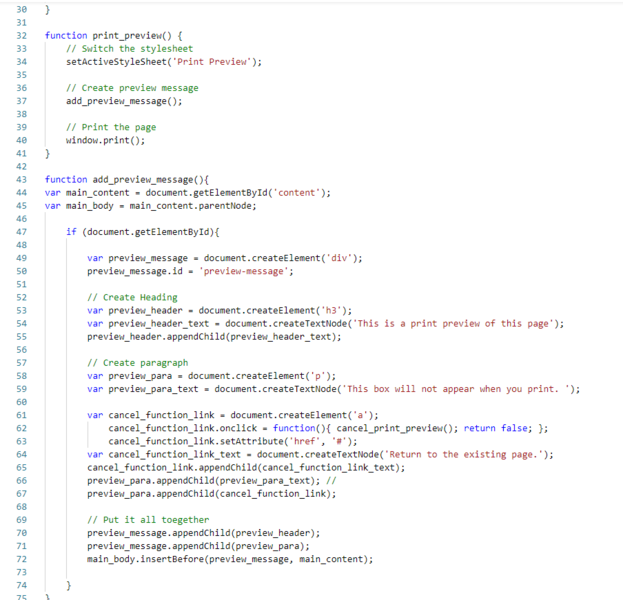
Lastly, I'll incorporate the JavaScript into the HTML tag with this link:

The functionality of both the default and the print-oriented CSS stylesheets is ensured to be protected from inadvertent breakage by future contributors (during changes to the wiki and layout), thanks to the fact that CSS Screen and Print styles are located in entirely separate files and only the latter will be applied in addition to the screen styling when printed. Alternatively, this project's print styles can be included within the existing style.css file by using @media rules; this might be useful for overriding background related screen stylings, as seen in the "Background replacement with border highlining" and "Color inversion for dark image backgrounds through CSS filters" paragraphs.
Hiding Unnecessary Elements - Advanced
Many areas of a website can't be printed in the Optimized for Printing as they either don't provide any relevant information or clutter the resulting page taking the attention away from the main body. The goal is to achieve seamless reading experience on paper by printing out only the most important content - it being the main text and the headers, not the exact web page. Thus, I am going to hide all areas that are not relevant, like the navigations, the pagination, the sidebar, the tags, and the categories, the comments, the share button, and other redundant elements.

Users will not want to print decorative and non-essential images and
backgrounds. Therefore, I have considered a default where all images are hidden
unless they have a print class:
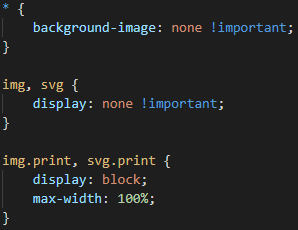
Hiding Videos, Comment Boxes and other iframes
Displaying forms like embedded chatrooms and comment boxes or integrated videos on a printed piece of paper servers no purpose and only wastes space, especially in the Optimized for Printing view where any idle space should be dedicated for displaying the main content. However, when setting the iframes on display: none, blank gaps remain. I'll employ the following code to hide iframes and remove the consequential whitespace, as well as videos entirely.
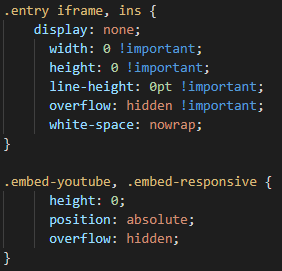
Color inversion for dark image backgrounds through CSS filters
Printed images and graphs should ideally use dark colors on a light background to have better ink economy. In order to allow people to include darker graphs and images in their contributions without having to worry about ink usage, I'll employ CSS filters for handling the color adjustments and eventual inversion of darker bitmaps. Example code:


Background replacement with border highlighting
The
backgrounds of quote sections and call-out boxes are often denoted by slightly darker
grey scale shades. It is however possible to both save ink - by avoiding
unnecessary shading - and highlight the text within said sections by replacing
their backgrounds with just the borders: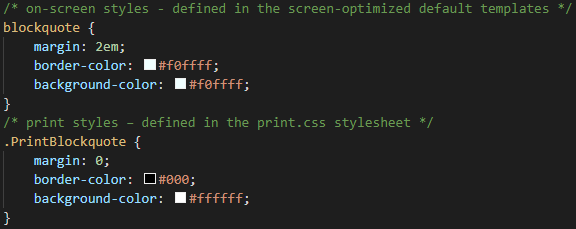

Addition of supplementary print-exclusive messages
Printed wiki articles or other PublicLab.org's posts may require additional information which would not be necessary on-screen. Such print-exclusive messages could be used to display copyright, URL, timestamps or other extra information, that I will collect by asking the community directly. Since CSS content property can be employed to append text to ::before and ::after pseudo-elements, I'll be able to integrate said information on every printed page.

For page-specific information, I am going to implement the use of classes such as print to ensure its content will be hidden on screen:

The corresponding CSS will look something like:

Supplementary options for binder storage
If pages are intended to be stored in a binder, it is necessary to modify the main body's positioning for every other page; this can be achieved by manipulating margin width differently for odd and even numbered pages. I am going to define such alternative margins by targeting specific pages through CSS Paged media (@page).

Needs
While working on the above-mentioned tasks, I will constantly submit my progress to community members for feedback. Suggestions from the mentors at least once a week will be highly appreciated and would be enough to complete the project successfully.
Teamwork experience
Describe teams you've worked with before, whether open or closed source, and in what capacity you participated. Cite examples of how you were self-motivated and self-sufficient.
I've won the Industry 4.0 Innovation HI40 Award while competing as Project Manager and group coordinator. My team an I developed a fully functional Flooding Alert System in less than 6 hours, complete with remote water and humidity sensor management and a responsive mobile application in React Native for alert display. I have also led a cross-functional 2-person team focused on modernizing Ansaldo STS' Intranet front-end using JavaScript, Ruby on Rails, HTML5 and CSS3 styling. I had been given this opportunity after being chosen out of 260 participants nationwide for this 2-month professional development program for high-achieving student talent in tech, based on leadership potential and academic success. After organizing the workload so to finish ahead of schedule, my team and I carried out translations of both software documentation and production directives. Under my guidance we have been awarded "Best Presentation" by the CEO Andy Barr out of 50 teams for the most exhaustive display of archived results.
Relevant experience and First time contribution
I'm currently a second-year BSc Computer Science 4.0 GPA student at the University of Genova (UNIGE), Italy. I am also a member of the IANUA-ISSUGE Excellence Academic Program (admission requires a perfect GPA score). In addition to the above, I also have 4 autonomous JavaScript, HTML5, CSS3, React, Node.js, Ruby on Rails, GraphQL, Express.Js and Angular frontend projects on my GitHub account.
Further skills include good working knowledge of C++, C (with GnuPlot), Python, SQL, Linux/Unix Scripting, OCaml, Java and Git Version Control.
This will be my first non-trivial contribution both to PublicLab.org and to open source; I'm currently working on this issue: https://github.com/publiclab/plots2/issues/7613; https://github.com/publiclab/plots2/pulls/Tlazypanda.
Passion
What about our projects, and Public Lab, interests you? What are you passionate about? Open science, environmental justice?
I envisioned my Flooding Alert System project after my native city had been subjected to two catastrophic floods in less than 5 years. Excess runoff from rain could not be soaked by the ground as building speculation had paved most of the city's land. Damages amounted to millions of euros, and most people didn't manage to save the belongings that they had stored in basements and ground-level store warehouses as they didn't initially know that waste-mud was filtering through cracks in uneven pavements. After learning about PublicLab.org's mission to provide open-source solutions for solving environmental issues, I have been inspired to join the community to help extend the reaching of open science and environment-related research notes. I aspire to apply the coding knowledge I gained from both the coursework and personal projects to positively affect people's lives through making PublicLab.org's free content more accessible on paper.
Audience
Whom do you want your work to help? We especially appreciate proposals which make technologies and techniques more welcoming and friendly to those who've often been excluded.
Amelioration of user's printing experience shall provide users with disabilities whom either find it difficult to use a screen or cannot be exposed to the blue light generated from monitors for prolonged time with access to PublicLab.org's content. The adjustments regarding the font size shall also enhance readability for visually impaired users. Paper-based dissemination of knowledge permits both the accessing to information in areas with poor connectivity and the utilization of said data in dangerous or dirty conditions where internet devices might not be permitted. Plus, this optimization would also help the environment as less pages will be needed for printing, while simultaneously consuming less ink for the same amount of paper-outputted data. Finally, in case of binder storage, optimized margin management shall be helpful in office settings.
Commitment
I am fully aware of the importance of the commitment required to complete this project. I am ready to devote myself to its completion within the deadlines by committing to spend 6 to 8 hours a day or more, if necessary.

9 Comments
@bansal_sidharth2996 @warren @cess Please, have a look on my proposal, any feedback would be greatly appreciated!
Reply to this comment...
Log in to comment
Hello, Awesome Proposal on Printability of posts. You and Rishabh can help each other on this proposal as both of you are working on the same project idea. Secondly, can you please add tests - system tests, unit tests etc to ensure correctness of your code! Thirdly, please add some time for fto creation like a week or less! Lastly, add some time for documenting the stuff. Thanks Best of luck
Reply to this comment...
Log in to comment
Hello, can you please add https://github.com/publiclab/plots2/pulls/Tlazypanda in the contribution section. Similar thing is for all students
Reply to this comment...
Log in to comment
Hi @susannadiv, great proposal 🎉 🎉 Love the code snippets ❤️ ..maybe you could add a paragraph description at the top telling us a little bit about yourself(totally optional). Thanks
Reply to this comment...
Log in to comment
There is change in the timeline. Kindly change the timeline. Thanks
Reply to this comment...
Log in to comment
Hi, this is really great, thanks so much. One thing on strategy - we had implemented a basic set of CSS hiding styles on the existing page, but have found that they break easily and are hard to test for. This motivated us to propose a second page template specifically for printing, rather than using CSS to hide non-print content. What do you think of this strategy? It would still use much of what you've described above but could make for a cleaner and less brittle approach.
We would also love to see you complete a first-timers-only issue from https://code.publiclab.org -- do you have one you could take on and share? If not we can make you one to suit!
Thanks a ton for your proposal!
Is this a question? Click here to post it to the Questions page.
Hello, thank you so much @warren !! I too believe that employing an additional stylesheet is preferable to overriding the existing screen styling, expecially considering the radically different outputs they produce. I have modified the proposed code sections & correlated explainations accordingly; I've also added a Testing Strategy section with the newly-upgraded, simplified approach to testing (thanks to the screen-print CSS rule separation). As I didn't originally manage to claim a first-timer-issue in time, thank you so much for proposing this - I'd absolutely love to take one!! Thank you again for your feedback!
Reply to this comment...
Log in to comment
Hey, really excited to see this proposal !!! Couple of pointers:
Very exciting! Thanks 😃 !
Is this a question? Click here to post it to the Questions page.
Hi, thank you so much for your feedback @sagarpreet !! I elaborated on my testing strategy in the omonim section - thanks for pointing that out! As far as external CSS libraries go, I have added the open source Paper CSS framework for simplified padding management. :) I also belive to be entirely possible to allow code reusability through instruction regrouping with easily-dentifiable names in CSS; this could be easily achieved by adding the @import at-rule statement followed by the name of this project's print optimized stylesheet to any possible future files (traditional high-abstraction class inheritance is not part of the CSS standard, it could be achieved by using the LESS tool but it's unfortuntely not widely supported; however, common attributes imported from external files trough the @import rule can instead be easily ovverriden by future contributors). Thank you so much!! 😃
Reply to this comment...
Log in to comment
Login to comment.